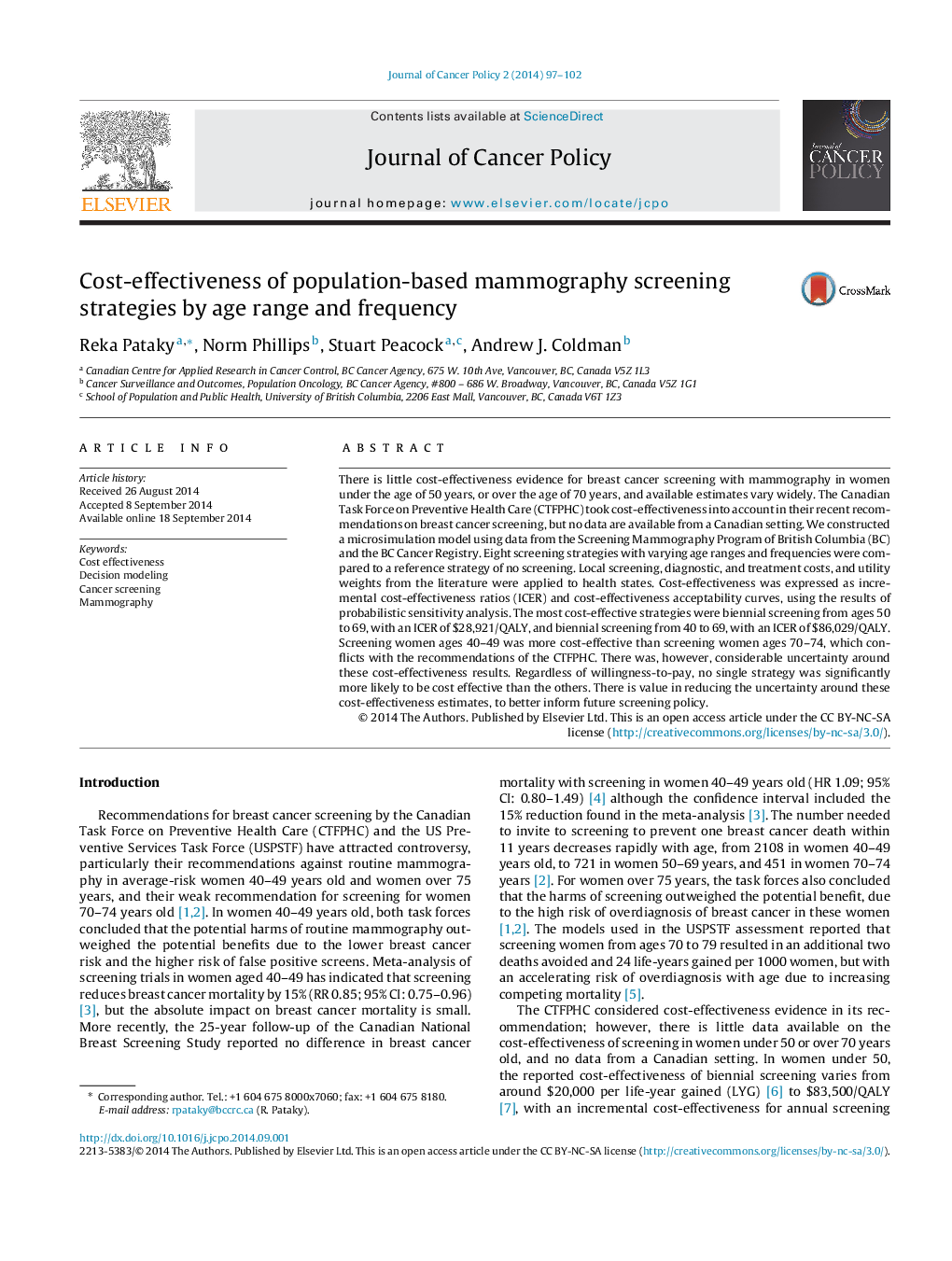| کد مقاله | کد نشریه | سال انتشار | مقاله انگلیسی | نسخه تمام متن |
|---|---|---|---|---|
| 3988753 | 1258590 | 2014 | 6 صفحه PDF | دانلود رایگان |
• We model 8 mammography screening strategies, varying screening age and frequency.
• The model was built using observational data from a population-based screening program.
• Biennial screening was more cost-effective than annual screening.
• Screening women 40–49 years was more cost-effective than screening 70–74 year-olds.
• There is potential value in reducing uncertainty around cost-effectiveness results.
There is little cost-effectiveness evidence for breast cancer screening with mammography in women under the age of 50 years, or over the age of 70 years, and available estimates vary widely. The Canadian Task Force on Preventive Health Care (CTFPHC) took cost-effectiveness into account in their recent recommendations on breast cancer screening, but no data are available from a Canadian setting. We constructed a microsimulation model using data from the Screening Mammography Program of British Columbia (BC) and the BC Cancer Registry. Eight screening strategies with varying age ranges and frequencies were compared to a reference strategy of no screening. Local screening, diagnostic, and treatment costs, and utility weights from the literature were applied to health states. Cost-effectiveness was expressed as incremental cost-effectiveness ratios (ICER) and cost-effectiveness acceptability curves, using the results of probabilistic sensitivity analysis. The most cost-effective strategies were biennial screening from ages 50 to 69, with an ICER of $28,921/QALY, and biennial screening from 40 to 69, with an ICER of $86,029/QALY. Screening women ages 40–49 was more cost-effective than screening women ages 70–74, which conflicts with the recommendations of the CTFPHC. There was, however, considerable uncertainty around these cost-effectiveness results. Regardless of willingness-to-pay, no single strategy was significantly more likely to be cost effective than the others. There is value in reducing the uncertainty around these cost-effectiveness estimates, to better inform future screening policy.
Journal: Journal of Cancer Policy - Volume 2, Issue 4, December 2014, Pages 97–102
